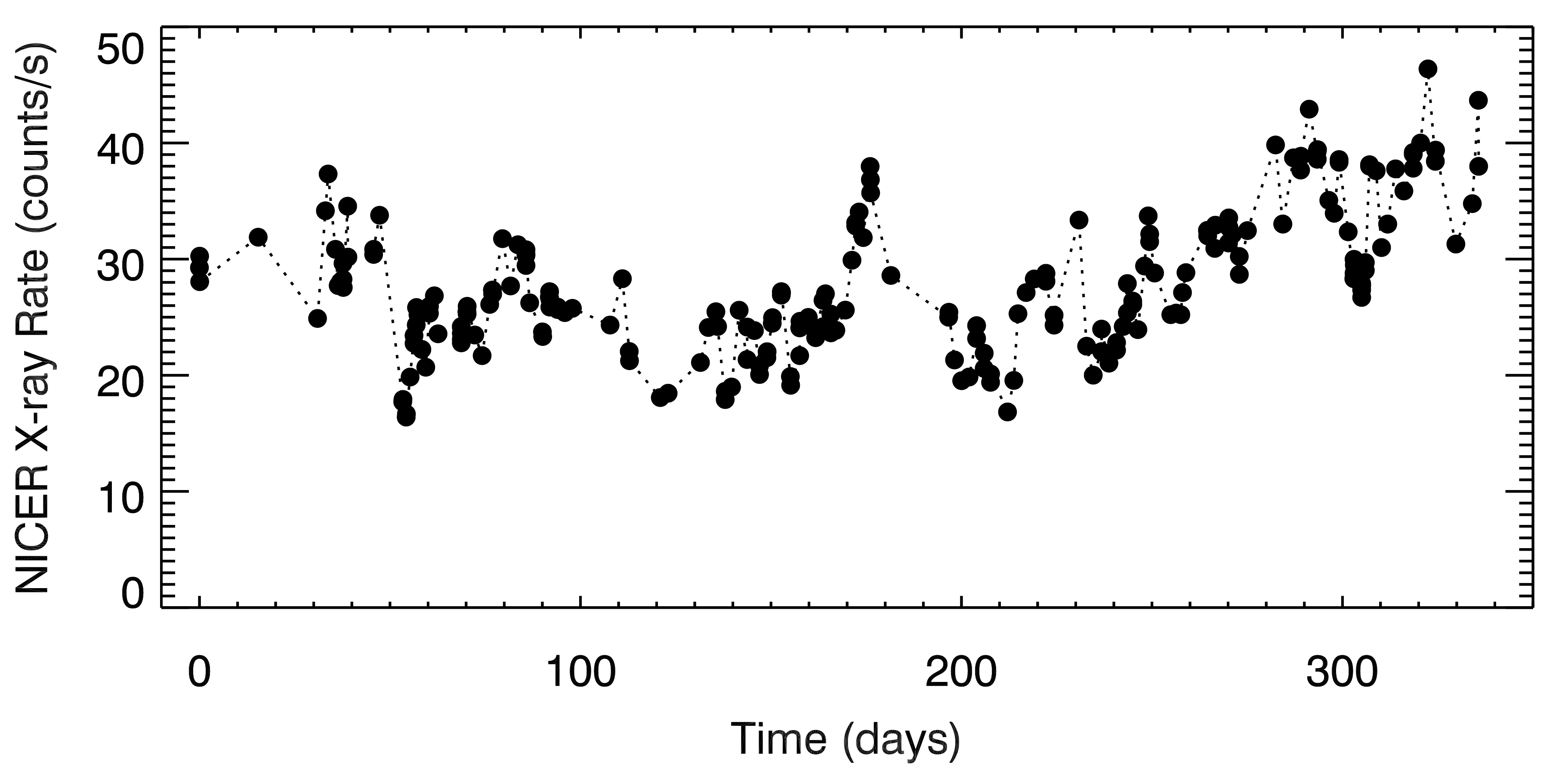NICER / ISS Science Nugget for June 20, 2019Observations of X-ray variability used to map accretion disk in Fairall 9Supermassive black holes millions of times the mass of the Sun reside at the center of every major galaxy in the Universe. A small fraction of these, known as Active Galactic Nuclei (or AGN), are actively ingesting surrounding gas and dust in a process known as accretion. As this material spirals down in an 'accretion disk' towards the black hole it gets extremely hot and emits strongly across the electromagnetic spectrum, making these black hole systems some of the most luminous objects in the Universe. Exactly how this process of accretion takes place is of great interest, as it is a powerful mechanism that can shape the evolution of the galaxy hosting the black hole. But, the inner regions of these accretion disks are too small and distant to image directly, thus indirect techniques are used. One such technique is known as reverberation, or echo, mapping. Here, the bright X-ray and UV radiation emitted from close to the black hole light up the surrounding area. As the brightness of this radiation varies, it drives brightness changes in the light from the surrounding area, but with a time delay — an echo — due to the time it takes light to travel to the region. Using echoes of light in this way the size and geometry of the inner regions near supermassive black holes can be mapped. NICER is taking part in a large, 2-year, multi-wavelength echo-mapping campaign to study the accretion disk around an AGN called Fairall 9. Now one year into this campaign, astronomers are studying the AGN's variability in X-rays, UV, optical, and near-infrared with monitoring from NICER, NASA's Swift satellite, and a global network of robotic telescopes - the Las Cumbres Observatory. NICER's flexibility to monitor Fairall 9 frequently (approximately every other day), combined with its sensitivity means that campaign can track not just the change in brightness of the X-ray emission from Fairall 9, but also any changes in its X-ray spectrum. This provides vital clues as to what drives the variability and where the X-rays originate.
NICER
|



